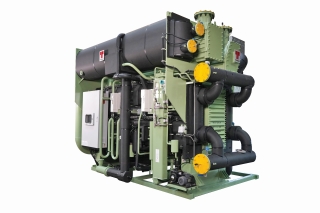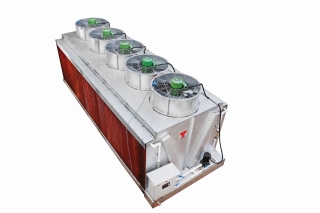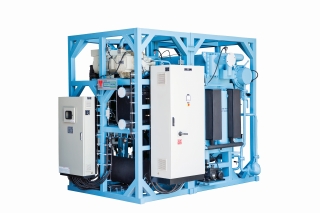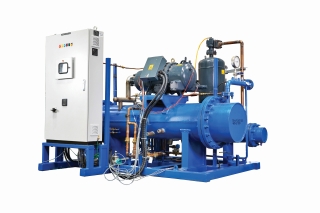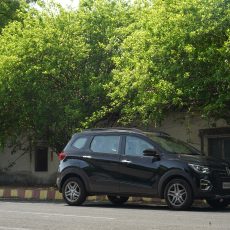The first-ever Thermax Fest by the leading global energy and renewable solutions company, Thermax, was held in its home city of Pune. We were happy to pay a visit and get an insight into the extensive list of multi-pronged solutions they have to offer.
Story: Jim Gorde
Photography: Thermax
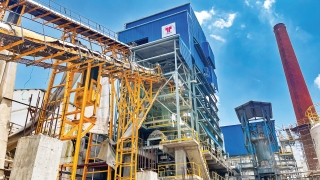
Okay, this was primarily a B2B tech fest that had a number of journalists from newspapers and national media present. Why Car India? Well, I have several words for you. Green Hydrogen, bio-CNG, renewable energy, and maximizing the potential of coal for power generation. The last bit? Well, with a population—and coal reserves—as large as ours, it seems inevitable, but with Thermax’s “gasification” tech, things could be better optimized. Let’s take a quick look at the solutions—from renewable, waste heat recovery, and waste-to-fuel to digital, water-saving, energy management, and coal gasification—that were showcased.
The Means
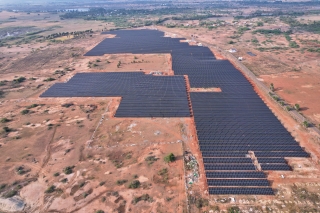
“Energy cannot be created or destroyed. It can only be transformed from one form to another.” That’s the first law of thermodynamics and it is the essence of the energy industry. Turning raw material sourced from the earth into steam, heat, pressure, and many more forms that help run our world. We’ve studied potential energy and kinetic energy and it’s down to making the most of what we have available while minimizing waste. From filtering and boiling to scrubbing and cooling, among many other treatments, the principle of “re-use, reduce, and recycle” is their guiding philosophy.
From water, oil, gas, solid waste, liquid waste, and agricultural waste to the sun, wind, and rain, every known source of energy and newly discovered organic sources or refuse (groundnut shells, rice straw, sawdust, cow dung, and more) are used in some form or another to enhance existing processes or create new processes altogether. “Fascinating” doesn’t even begin to cover it.
There are several solutions working together here to facilitate this transition to minimum waste. These include the reciprocating biomass grate (RBG), FlexiSource, and Mechanical Vapour Recompression (MVR) technology with Zero Liquid Discharge (ZLD), all of which make the most of what is available and, in some cases, even create a circular cycle existence.
Build-Own-Operate

Green energy is a buzzword but setting up a plant or facility from scratch is nothing short of tedious, to say the least. That’s where Thermax, more particularly, their subsidiary Thermax Onsite Energy Solutions Limited (TOESL), come in. Founded in 2009, TOESL is a wholly owned subsidiary of Thermax Ltd and offers outsourced green utilities such as biomass-based steam, heat and co-generation, water and wastewater solutions, bio-CNG, and biomass gasification through the build-own-operate (BOO) business model. The company partners with its clients by providing green solutions and helping them achieve their ESG goals. They have been partnering with over 25 large corporates and multi-nationals for utility supply globally. There are more than 45 installations across India, Indonesia, and Sri Lanka.
The company uses only sustainable, locally sourced agro-waste and other forms of biomass as fuel instead of fossil fuels, thereby reducing carbon footprint and optimizing energy cost, leading to a circular economy. Water is a depleting natural resource and needs conservation. TOESL provides zero liquid discharge and desalination solutions to reduce freshwater consumption by industries.
Bio-CNG

Natural gas is one source of energy but having the means to convert natural waste or refuse from other processes—saw dust, groundnut and cashew-nut shells and husks, bamboo chips, paddy straw, waste material from soya, cumin and bagasse, among others—into usable heat energy and gas furthers sustainability.
New technologies from TOESL include anaerobic digestion to produce bio-CNG, a fuel widely used to replace natural gas in the automotive sector and industries, and biomass gasification to replace oil and gas use in industrial processes for direct heating applications. Current biomass sourcing in India stands at more than 2,500 tonnes per day. Moreover, all collection and processing facilities are located within a specified radius to keep the carbon footprint from storage and transport to a minimum.
Green Hydrogen
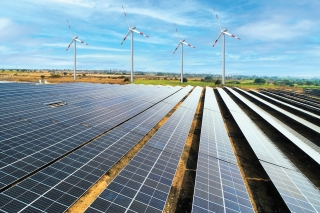
Of the many colours allocated to hydrogen based on how it is produced, “green” hydrogen is made using clean electricity from surplus renewable energy sources to electrolyse water. “Grey” and “blue” are used for hydrogen made using steam reforming for natural gas, without and with carbon capture and storage, respectively. Then there is “pink” for when it is generated using nuclear power, “black”, and “brown” for hydrogen made using coal or lignite—the polar opposite of green—with “yellow” signifying solar power and “white” referring to hydrogen found geologically in its natural form.
India has a well-defined incentive scheme for green hydrogen. Under the green hydrogen mission, the government has announced a target of five million metric tonnes per annum of green hydrogen production by 2030 and has come out with various incentives to promote developing India as a “Green Hydrogen” hub. Thermax are working with KPIT and ARI for the scaling up of biomass-to-hydrogen technology based on microbial process; a technology which utilises microbes to generate hydrogen from biomass as part of a two-step process. Additionally, they are also working with KPIT and Ankur Scientific for biomass-to-hydrogen generation based on gasification technology, the pilot of which is already operational. The target is 500 gigawatt-hour (gWh) of clean energy by 2030. As of 2023, the number already stands at 130 gWh. Manufacturing of electrolysers is also one of the focus areas for Thermax.
Coal Gasification
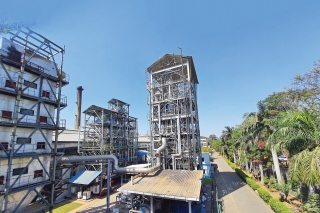
India has one of the highest coal reserves in the world, of which a large part is high-ash coal. Around 75 per cent of the coal is utilised for electricity generation, which leads to significant greenhouse gas emission. Other available options, such as converting coal into value-added chemicals, have not been pursued extensively. The utilisation of Indian coal through the gasification route along with carbon capture is a promising way of achieving India’s energy security.
Thermax’s patented gasifier with fluidised bed technology proves to be a game-changing solution that can gasify a wide range of coals. The gasification process can harness up to 60-70 per cent of coal’s energy, providing a more efficient and less carbon-intensive process compared to 35-45 per cent in the combustion process for power generation. The target is to upscale coal gasification plants with capacities ranging from 100 to 500 tonnes/day. A functional plant is presently operational on their premises in Pune.
Mechanical Vapour Recompression (MVR)

Wastewater disposal norms are becoming more stringent with growing concerns about the impact of industry on the environment and industries are leaning towards safer and more efficient disposal methods. Thermax’s in-house zero liquid discharge (ZLD) system features MVR technology and is suitable for effluent treatment in a diverse range of industries, including food processing, distilleries, and automobiles, among others. This technology outperforms conventional ZLD systems with reduced environmental impact, 40 per cent energy savings, and lower carbon dioxide (CO2) emission.
T-HVAC
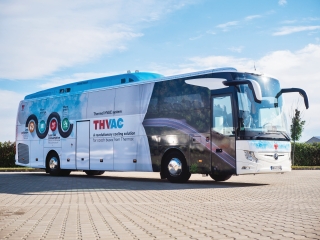
Public transport is a key element in the daily life of many citizens and having access to efficient, clean, and comfortable public transport is key to a successful city. While metros are beginning to become a part of the urban landscape, the humble bus has been a part of the everyday grind for many. Intra- and inter-city buses are both air-conditioned and non a-c and the focus for Thermax is on this aspect and making it comfortable.
Unlike normal air-conditioning systems that use a compressor, the T-HVAC (Thermal Heating Ventilation and Air Conditioning) system uses the exhaust gas from the combustion engine—whether diesel, CNG or bio-fuel—and converts the captured heat into a cooling solution. This takes the load off the compressor and can lead to precious fuel savings; especially in the long run for fleet operators. What’s more, it can also be retro-fitted on to existing vehicles. This is a boon for supply and demand ahead of the 2025 ruling making air-conditioned cabins mandatory for trucks and commercial vehicles with a view to reducing fatigue and, consequently, improving road safety.
FlexiSource
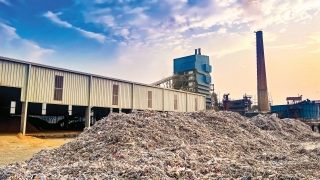
A multi-fuel solution, FlexiSource is a comprehensive and adaptive solution that enables a switch from conventional fuel input to flexible, sustainable, and green alternatives that fosters energy transition. The main considerations for fuel sourcing are cost, availability, environmental impact, and process waste disposal. Together with the reciprocating biomass grate, among other solutions, FlexiSource is capable of harnessing more than 15 different fuels, including a variety of residual biomass and agro-waste, adapting to specific geographic locations.
FlexiSource can transform many Indian cities by reducing their landfill problems.
Thermotron
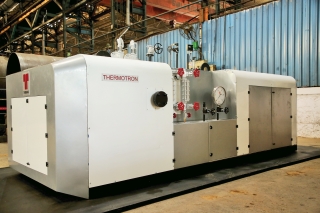
The boiler is a process heating solution that is one of the first products Thermax offered. Its evolution has proved to proverbially make hay regardless of sunshine. Thermotron is an electric process heating equipment designed and built completely in India. It offers benefits such as zero local emission and efficiency above 99 per cent. It further offers a simpler layout with no need for auxiliary systems such as fuel and ash handling or air pollution control systems, thus ensuring a low carbon footprint and reduced operational and maintenance costs.
When powered using renewable energy, it offers the opportunity to achieve zero global emissions.
EDGE Live
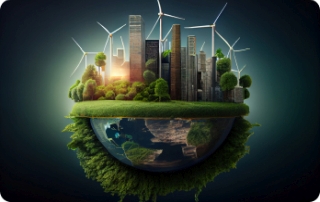
Thermax’s digital platform, EDGE Live, is an asset performance enhancement solution that not only allows customers an insight into their Thermax asset but also enhances their experience by catering to their demand for real-time predictive and proactive insights for asset health to improve energy efficiency, uptime, and reliability.
Integrating a client’s industrial global assets means data analytics are performed at the click of a button. It is an Industrial Internet of Things (IIoT) solution powered by advanced capabilities such as AI (Artificial Intelligence), ML (Machine Learning), and Thermax-engineered algorithms that make asset management both predictive and proactive. It can diagnose and prevent losses by making recommendations to optimize energy consumption and reduce the carbon footprint, facilitate expert guidance to improve efficiency and enhance decision-making, and also minimize unplanned downtime.
The Takeaway
Ultimately, for us at Car India, these solutions showcased at the Thermax Fest 2023 represent a real-world positive change towards green energy production and power generation. Carbon capture and methanol point to the possibility of synthetic fuel, but the imminent “carbon tax” will seemingly nip these sort of alternative solutions in the bud, unless more viable means are developed. Electric cars are growing in number but we can’t ignore the fact that they are far from green with over 70 per cent of electricity being generated using coal. Thus, optimizing our energy cycle and cutting down on losses and waste represent a way forward where we, as a country, are more energy self-sufficient.


